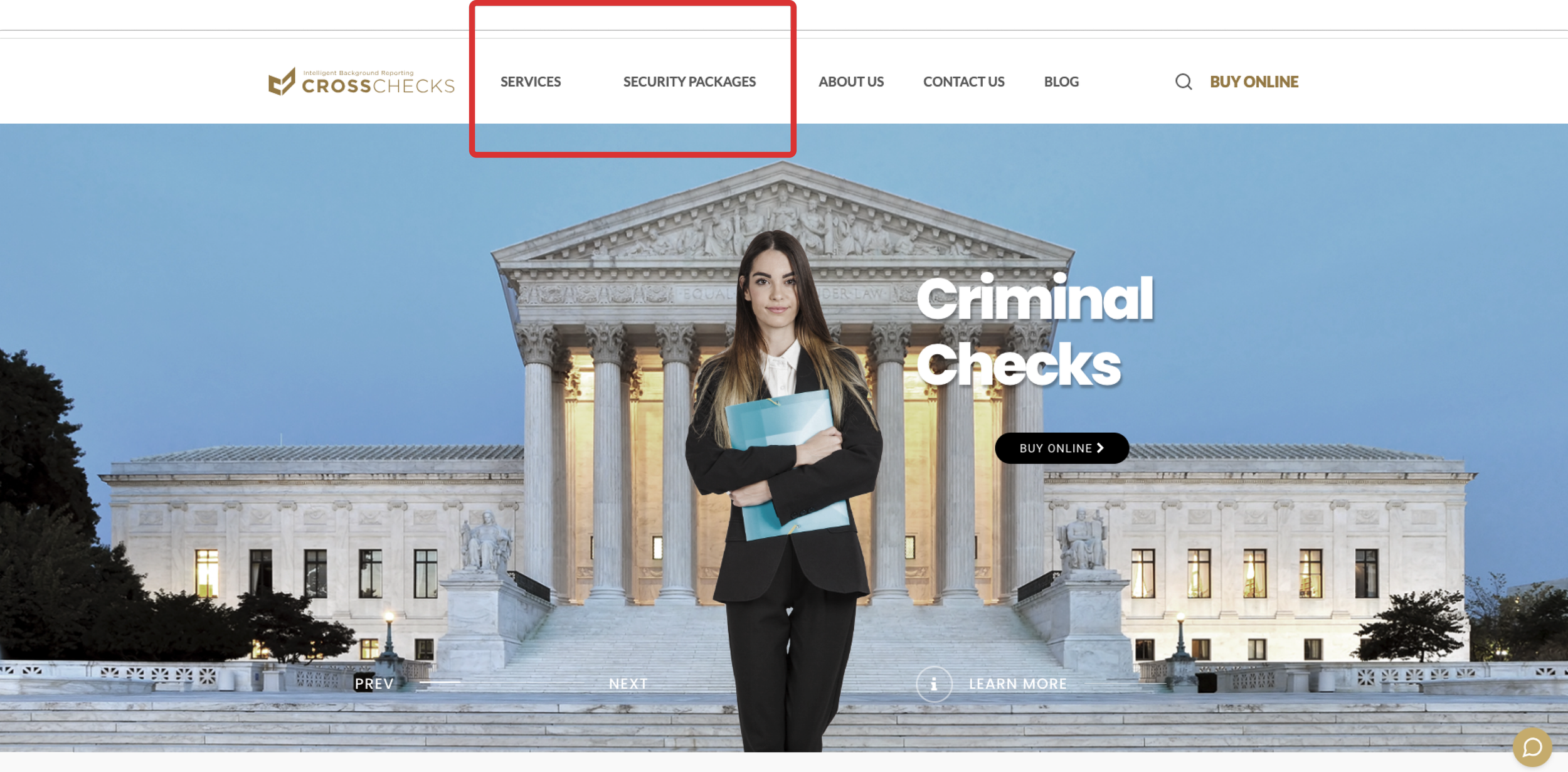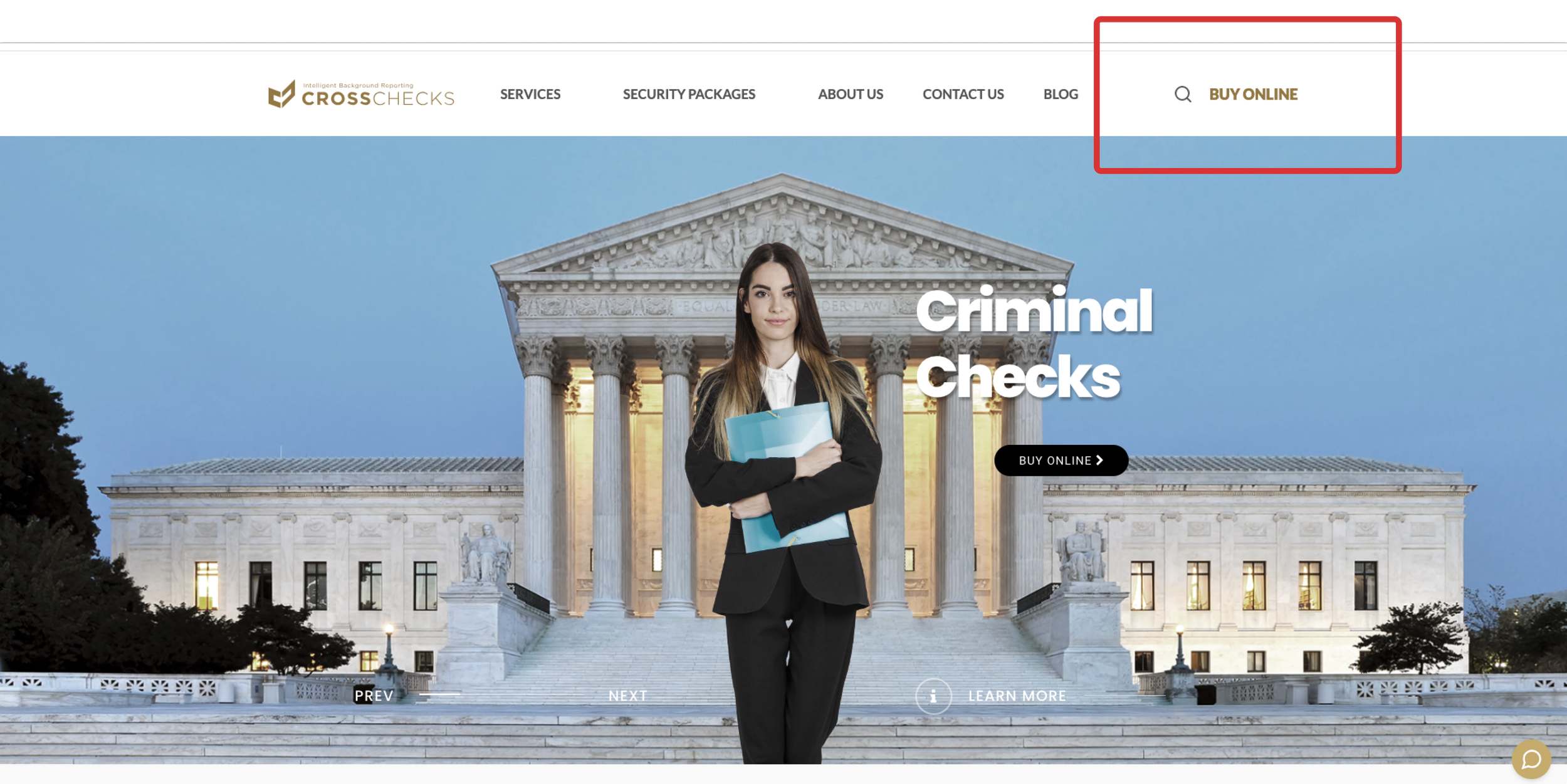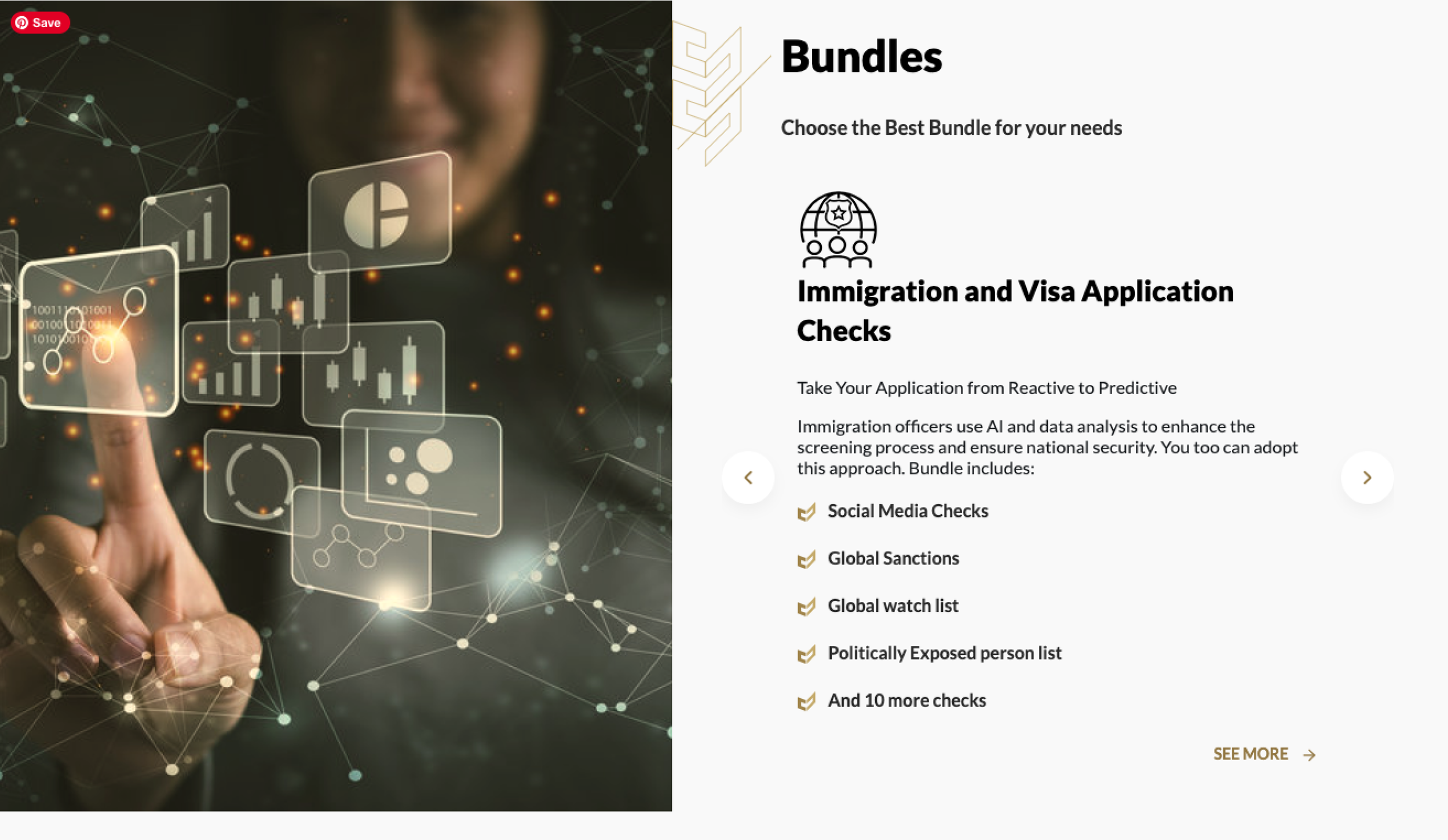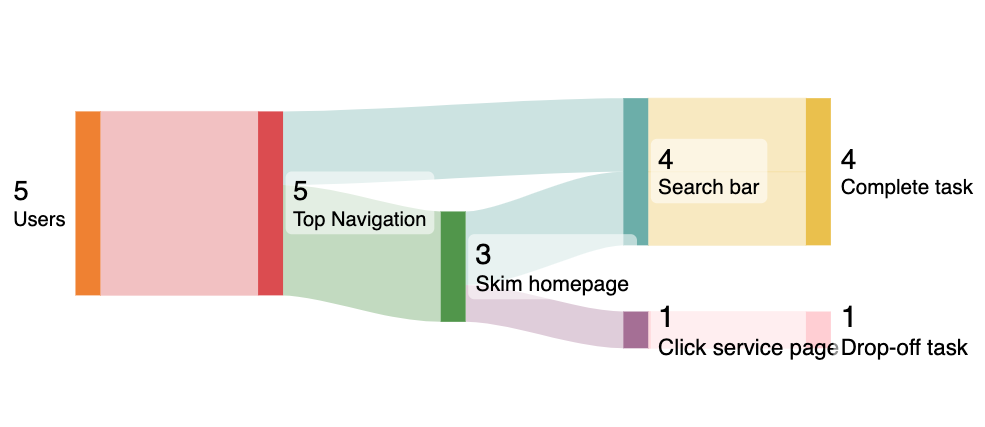9x Faster Task Completion: Redesigning a Background Check Site
Overview:
CROSSCHECKS, a global background check company, had major usability issues: abandonment rates were high, task completion was slow, and left users unable to find the services they needed, despite a booming $9B industry projected by 2030. Through research and optimization, I redesigned the site—cutting task time by 9x and reducing abandonment from 20% to 0%.
My Role
UX/UI designer
Tools
Figma, Procreate
Duration
Sep 2024 (4wks)
Project focus
Website redesign
"A background check isn’t just due diligence—it’s how we protect our people and our culture."
— Maria Chen, Senior HR Manager
Background
CROSSCHECKS expanded from local fingerprinting into global background checks but lost existing customers and struggled to convert new visitors into customers.
Problem
Users couldn’t find the services they wanted and often left before exploring further.
Solution
Homepage redesigned:
Improve services visibility
Make search bar more discoverable
Reduce cognitive overload
Impact
The redesign enabled users to complete tasks 9× faster.
15% conversion rate improvement.
User Groups & Needs
All three user groups see efficiency as key
Based on the initial discussions, I narrowed down to 3 types of users: small business owners, corporate HR teams, and individual employees. I conducted 5 user interviews and researched business articles and competitor background check reviews. I found that all groups view efficient navigation as key to their experience.
Small business owners
A quick, clear process to understand what background checks to request.
Human Resource teams
Efficiency, scalability, and integration with existing hiring platforms.
Individual employees
Need to complete the required background check quickly to proceed.
Hidden services and disorganized content caused frustration and a 20% drop-off
Current Site Usability Analysis
Since this is for a global background check company, I recruited a diverse range of 5 participants from Canada, the UK, and the U.S. Moderated usability tests were conducted to learn:
Users’ site experience
Services finding strategy
Drug test service finding task completion time
No dropdown to guide users to find desired services quickly
Users’ site experience:
Search bar hard to notice
Excessive animations, cluttered copy, and hidden services hinder homepage scanning and service discovery, while outdated images reduce user trust.
Drug test service finding task strategy:
5/5 immediately used top navigation to find services and explore site structure
2/5 used the search bar when navigation wasn’t enough
3/5 skimmed the homepage to locate services when navigation wasn’t enough, with 2/5 looping back to search to complete the task
1/5 drop-off after entering an overwhelming service page at 5 minutes and 24 seconds
The Sankey diagram showing all 5 users began with the top navigation to explore services and site structure. When it wasn’t enough, 2 turned to search and 3 skimmed the homepage, some looping back to search to locate services. One user dropped off after left homepage and entering an overwhelming service page. The observations highlights the need for clearer top navigation dropdown and more discoverable search to prevent frustration and abandonment.
Drug test service finding task completion time:
Avg. 1 minute and 43 seconds completion; one drop-off at 5 minutes and 24 seconds.
Key insights
20%
Dropped off while finding services
⚠️
100%
Wanted dropdown in top navigation
⚠️
40%
Wanted better search/ skimmability
⚠️
1’ 43”
Avg. service finding task completion time
⚠️
The benchmark usability testing shows users use dropdown menus for finding services they want and learning site features. If they can’t find dropdown menus they became annoyed immediately. I introduced structured dropdown menus featuring service grouping and alphabetical ordering to significantly improve service discoverability.
1. Adding dropdown menus
Redesign Highlights
BEFORE (no dropdown menus)
AFTER (with dropdown menus)
2. Improved search bar discoverability
Users rely on the search bar when navigation or dropdowns fail; if it’s not easily visible, they become frustrated.
BEFORE (inconspicuous search bar)
AFTER (more prominent search bar)
3. Easier service discovery with clear, static service listings
I removed distracting visuals and autoplay carousel to create a calmer browsing experience. Listed each test clearly on the same page so users can explore service packages at their own pace without navigating to separate pages.
BEFORE (autoplay carousel)
AFTER (user-controlled carousel)
100% users found services wanted seamlessly.
They then noticed a need for clearer, more detailed content.
Second Usability Test
After users no longer struggled to find the services they wanted, they expressed a need for more information on services, such as country switcher, pricing, and process details, which the client was still working to finalize. I discover this through a comparative user evaluation with five participants from the U.S. and Canada, presenting the original and redesigned versions side by side and testing task completion time.
Navigation ease
Users’ site experience
The following key findings were identified during the interviews:
All 5 users completed the “finding drug test screening” task in an average of 11 seconds, compared to 20% abandonment rate.
All 5 users found it’s easier to navigate with a much more intuitive navigation, progressive disclosure, improved visual and content hierarchy.
2/5 users found the new design still lacks enough information.
Test Result
✅
9x faster
Task was completed faster after the redesign
11”
Avg. service finding task completion time
✅
20% → 0%
Abandonment rate after the redesign
✅
40%
Found important details were unclear
⚠️
More Iterations
1. Creating process overview and templates with limited information
After the second usability test, I learned that 2 out of 5 users noticed that some services were country-specific but not clearly labeled, some in titles, others in subheaders, making them feel confused and less confident in the site.
Process overview
Template with process details and “Contact Us”
After the second usability test, I found that users wanted clearer details on pricing and turnaround time before booking. Since these elements were still being defined, I collaborated with the CEO to design a service template based on competitor analysis, adding key information, clear instructions, and a prominent “Contact Us” option for user inquiries.
2. Adding whole site country switcher
BEFORE (inconsistent country labeling)
AFTER (site-wide country switcher)
Technical Constraints & Adaptation Strategies
Filters as the current solution vs. site-wide country switcher for future adaptation
After meeting with the stakeholder, I learned that a site-wide region switcher wasn’t feasible on the WordPress platform due to technical constraints, so the developer and I implemented service page filters as a temporary solution.
Site-wide country switcher
Service page filters
Current Prototype
Client Testimonial
Eliza M. CEO of CROSSCHECKS
“Her thoughtful approach—asking the right questions and doing deep research to truly understand my business—resulted in a website design that exceeded my expectations.”
Final Thoughts
Post-implementation UX metrics recommendations
I recommended the following metrics to guide future iterations after design implementation:
Task completion time and rate: Track task completion rates and times for key actions, such as plan purchases and specific information searches, to identify potential navigation or clarity issues affecting user success.
Bounce rate: Track the percentage of users who leave the site after viewing only 1 page, which could signal confusion or irrelevant content.
User satisfaction scores: Collect user feedback through surveys or questionnaires to gauge overall satisfaction with the website experience.
Conversion rate: Measure the percentage of users who complete a desired action, such as signing up for a plan or making a purchase.
What I accomplished
Identified critical areas for improvement on the website including cluttered design, unclear information, inconsistent design elements, irrelevant content, and distracting animations to improve user navigation.
Revitalized brand visuals by transitioning from a traditional to a contemporary design, focusing on optimizing information hierarchy, enhancing spatial layout, and curating impactful imagery.
Optimized the website, resulting in a 9x faster task completion time and reducing the abandonment rate from 20% to 0% during the drug test navigation task (based on results from 5 users).
Improvement and reflection
The unspoken client needs, often the root of deeper challenges:
From this experience, I learned the importance of proactively identifying clients' unspoken needs—often the root of deeper challenges. What initially seemed like a visual design issue turned out to reflect a lack of clarity in the client’s business identity. When clients struggle to define content hierarchy and priorities, in this case, it signals unresolved questions about their core services, pricing, and positioning. I realized that gaining deeper industry knowledge early on is essential to understanding the barriers preventing them from reaching their goals. Addressing these issues requires going beyond UI fixes—leveraging tools like AI and competitor analysis earlier in the process could have clarified their direction and strengthened strategic decisions.
Explore more the ethical implications of AI in the background check industry:
Moving forward, I aim to explore the ethical implications of AI in the background check industry to ensure its responsible use. I also recognize the importance of a more clearly defined business direction to support strategic decision-making. Balancing CROSSCHECKS’ global expansion with a smooth transitional process remains a priority as I continue to refine workflows and support sustainable growth.
<< Previous
Adding an AI-driven personalized stylist feature to ASOS e-commerce
Next >>
Effortless sustainable shopping: Responsive website + Chrome extension



















